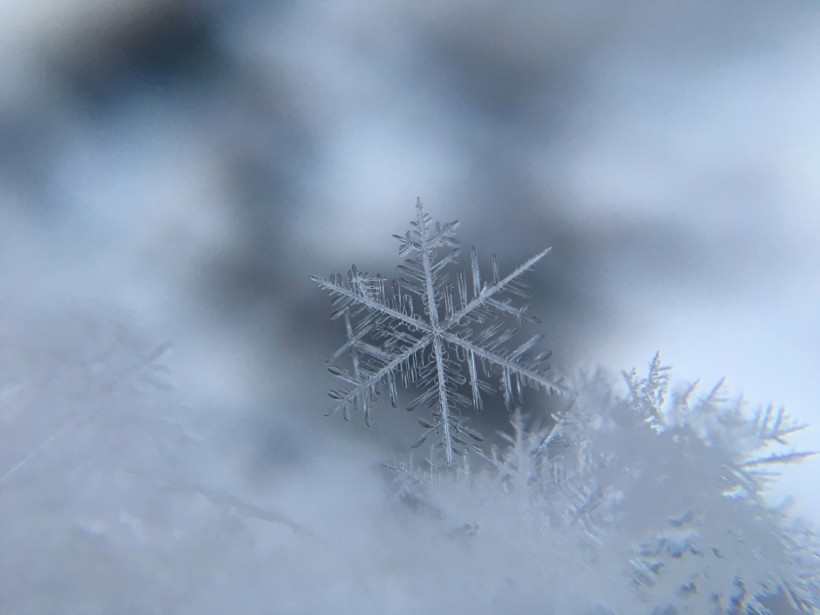Snowflakes are captivating crystal formations with intricate and unique designs that have long been a source of fascination. Their mesmerizing branches reach toward the sky with each snowflake standing as an individual work of art. Yet, the question remains: what is the upper limit to the size a snowflake can achieve?

Snowflakes Unveiled: From Microscopic Masterpieces to the Largest Recorded Icy Marvels
Largest Snowflake Ever Recorded
Snowflakes display a vast array of shapes and sizes, ranging from large picturesque ones that transform the landscape into a winter wonderland to tiny, almost imperceptible particles that require keen observation.
In the winter of 1887, an observant rancher named Matt Coleman witnessed extraordinary snowfall in western Montana, where he described encountering snowflakes that he deemed "larger than milk pans."
The Guinness World Records officially named them as the largest documented snowflakes with an impressive width of 15 inches (38 centimeters) and a thickness of nearly 8 inches (20 cm).
Although the lack of photographic evidence documenting these immense flakes adds an element of mystery, their existence continues to captivate precipitation enthusiasts, sparking investigations into the hypothetical boundaries of snowflake dimensions. This curiosity extends to exploring the intriguing prospect of a singular snowflake attaining the size equivalent to that of a dinner plate.
READ ALSO: People Can Now Make Metal Snowflakes With Zinc's Help!
Snowflakes: Myths, Clusters, and Crystal Limits
Kenneth Libbrecht, a physics professor at the California Institute of Technology, dispels the common misconception surrounding snowflakes, emphasizing that when people mention snowflakes, they are often referring to snow crystals.
Snow crystals are singular ice crystals where water molecules align in a hexagonal pattern, showcasing the recognizable six-fold symmetry. However, snowflakes can range from individual crystals to clusters of hundreds or thousands of crystals, sticking together as they fall to the ground.
Libbrecht notes that in cold regions, large aggregated snowflakes, often called puffballs, are a common sight. These are clusters of ice crystals that collide in midair to form larger structures. While such conglomerates might have been what rancher Matt Coleman observed on his cattle ranch, the typical size of a snow crystal is much smaller.
In controlled conditions in his lab, where wind and temperature are optimized for snow crystal formation, Libbrecht has observed crystals growing up to approximately 10 millimeters (0.4 inches), roughly the size of a dime. The wind, however, acts as a limiting factor, preventing the growth of larger crystals as they become fragile and break apart easily.
Despite their size constraints, snow crystals exhibit a remarkable diversity of shapes influenced by factors like temperature and humidity, ranging from simple prisms and columns to intricate rosettes and fernlike stellar dendrites documented by Ukichiro Nakaya in the 1930s.
Atmospheric Secrets Behind Gigantic Snowflakes
Scientists are now uncovering the atmospheric conditions responsible for gigantic snowflakes, employing laser probes to observe their existence. The laws of physics governing our planet don't impose inherent limits on snowflake size, but wind can cause them to break, setting a maximum size for ground-reaching flakes.
For a snowflake to match the record-setting 1887 size, the environment needs to be calm, allowing it to maintain its large shape, and there must be ample moisture for ice crystals and frozen droplets to accumulate. The historic snowflake was likely not the typical symmetrical shape but an irregular, lumpy aggregate.
RELATED ARTICLE: Are Snowflakes Really Uniquely Patterned? Know How These Tiny Ice Crystals Are Formed
Check out more news and information on Snow in Science Times.














